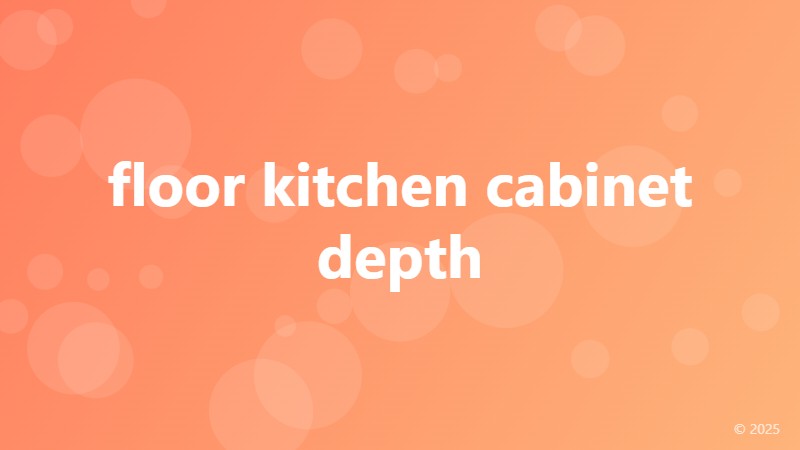floor kitchen cabinet depth

Understanding Floor Kitchen Cabinet Depth: A Guide to Optimal Design
When it comes to designing a kitchen, one of the most critical aspects to consider is the floor kitchen cabinet depth. This dimension plays a significant role in determining the overall functionality, aesthetics, and workflow of your kitchen. In this article, we'll delve into the world of floor kitchen cabinet depth, exploring the standard dimensions, benefits of customization, and tips for optimizing your kitchen layout.
Standard Floor Kitchen Cabinet Depths
In the world of kitchen design, standard floor kitchen cabinet depths typically range from 24 to 36 inches. These dimensions are designed to accommodate the average human height, allowing for comfortable access to storage and countertops. However, it's essential to note that these standards can vary depending on the manufacturer, style, and intended use of the cabinets.
For instance, base cabinets usually have a depth of 24 inches, while wall cabinets can range from 12 to 24 inches. Tall cabinets, on the other hand, can have depths of up to 36 inches or more. Understanding these standard dimensions is crucial in planning your kitchen layout, ensuring that your cabinets fit seamlessly into the available space.
The Benefits of Customized Floor Kitchen Cabinet Depths
While standard dimensions provide a general guideline, customized floor kitchen cabinet depths can offer numerous benefits. By tailoring your cabinet depths to your specific needs, you can:
- Maximize storage capacity: Customized depths allow you to make the most of your available space, storing more items and reducing clutter.
- Improve workflow: By adjusting the depth of your cabinets, you can create a more ergonomic workflow, reducing bending and stretching.
- Enhance aesthetics: Customized cabinet depths can create a more visually appealing kitchen, with sleek lines and a sense of continuity.
Tips for Optimizing Floor Kitchen Cabinet Depth
When designing your kitchen, consider the following tips to optimize your floor kitchen cabinet depth:
- Measure carefully: Take precise measurements of your kitchen space, including any obstacles or constraints.
- Consider your needs: Think about your storage requirements, cooking habits, and personal preferences when determining the ideal cabinet depth.
- Balance functionality and aesthetics: Strive for a balance between storage capacity, workflow, and visual appeal when designing your kitchen layout.
- Seek professional guidance: If you're unsure about the optimal floor kitchen cabinet depth for your kitchen, consult with a professional designer or contractor for personalized advice.
By understanding the importance of floor kitchen cabinet depth and applying these tips, you can create a kitchen that is both functional and beautiful, providing years of enjoyment and convenience.